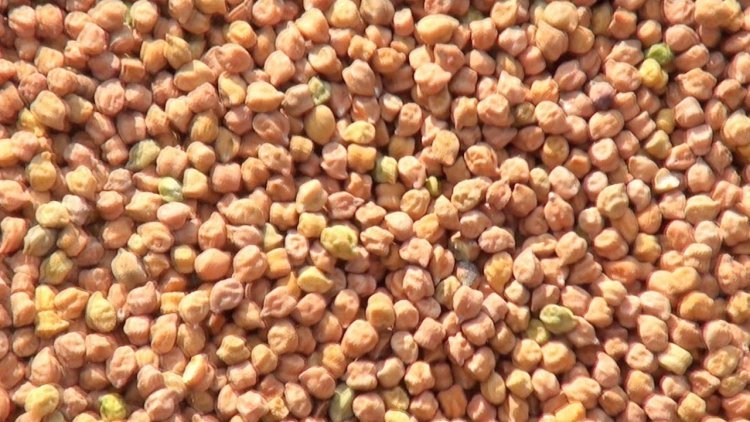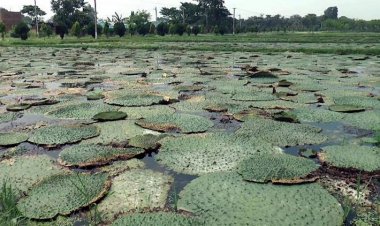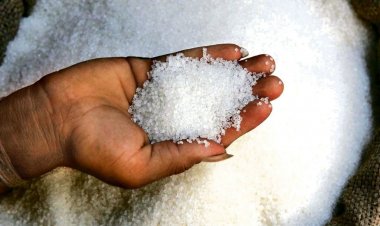Amidst claims of self-sufficiency in pulses, declining production of gram, rising prices and resort to imports
The buffer stock of gram in two years of government procurement crossed 30 lakh tonnes last year. But according to sources it is less than five lakh tonnes currently. To control gram prices which have reached Rs 7000 per quintal, the government has reduced the duty on gram import to zero. The minimum support price (MSP) of gram for the current Rabi marketing season (2024-25) is Rs 5440 per quintal. Last year it was Rs 5335 per quintal

The target of achieving self-sufficiency in pulses by 2027 which the government wants to achieve is looking difficult due to decline in production. Chana prices are also increasing amid changes in production estimates and market's estimates of production. However, due to the steps taken by the government like increase in MSP and government procurement, the production of pulses increased from 163.2 lakh tonnes in 2015-16 to 273 lakh tonnes in 2021-22, in which also the production of gram increased more. At the same time, the buffer stock of gram in two years of government procurement crossed 30 lakh tonnes last year. But according to sources it is less than five lakh tonnes currently. To control gram prices which have reached Rs 7000 per quintal, the government has reduced the duty on gram import to zero. The minimum support price (MSP) of gram for the current Rabi marketing season (2024-25) is Rs 5440 per quintal. Last year it was Rs 5335 per quintal.
Now, how much the prices of gram will rise will be decided only by the price of gram in the global market. At present the import price of gram from Australia is around Rs 7200 per quintal. According to the inflation data of April 2024, the inflation rate of pulses has been 16.84 percent and according to the Consumer Affairs Department, the price of chana dal on May 23 was Rs 85 per kg, which was Rs 70 per kg a year ago.
In fact the government had a better ability to maintain prices at reasonable levels. Due to procurement by government agencies, the government had a buffer stock of more than 30 lakh tonnes of gram in 2023. Last year, the government had procured 23.55 lakh tonnes and had a carry over stock of 14.37 lakh chana. But in the last one year or so, the government has used it extensively to control the prices of pulses.
Which was done in the hope of better production, but the Agriculture Ministry made amendments in the production figures for the previous year. Last year, the government had released an estimate of gram production of 135 lakh tonnes which was later reduced to 122 lakh tonnes.
As against this year's production estimate of 121.6 lakh tonnes, traders believes that the production is around 100 lakh tonnes. This has affected the prices and the traders have purchased more gram. The government agencies have purchased 45 thousand tonnes of gram this year.
In February, the government had said that it would enter into long-term contracts with farmers to purchase pulses and apart from MSP, it would also purchase pulses at market prices. But amid this claim, the government could purchase only 45 thousand tonnes of gram at MSP this year through NAFED. At present, the price of gram at the mandi level is around Rs 6500 per quintal, whereas in the terminal markets, it is at Rs 7000 per quintal.
To improve the supply of gram, the option of import is being tried. Due to which 60 percent import duty on gram has been abolished. Surcharge was also levied on the 60 per cent import duty, due to which the effective import duty was 66 per cent.
Due to higher import duties in India, most exports from Australia were destined for Bangladesh, Pakistan and the United Arab Emirates (UAE). But now that India has abolished the import duty, some traders have decided to export option deals to India because the market is big here.
According to trade sources, about one lakh tonnes of gram has been imported from Australia. The import price of gram from Australia to India is around $840-850 per tonne (CIF) which comes to around Rs 7200 per quintal. What is being imported from Australia is from last year's crop. In the case of gram, the next crop will arrive in Tanzania in August. Australia's next crop will arrive in October.
Now in such a situation, demand for imports from India directly means increase in prices in the global market. Therefore, the government's problems may increase due to the inflation of pulses’ prices which has creached at 16.84 percent in April, 2024. Consumers will have to be prepared for higher prices because the prices of most pulses except moong are already increasing.
In the last one year developments related to gram are enough to see how far from the reality are the policy makers who aim to achieve self-sufficiency in pulses by the year 2027.



 Join the RuralVoice whatsapp group
Join the RuralVoice whatsapp group






































